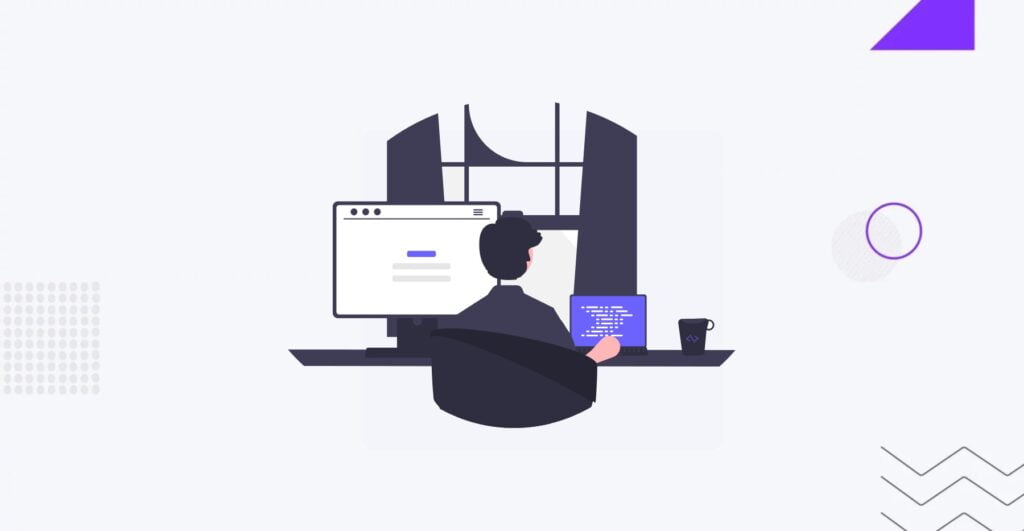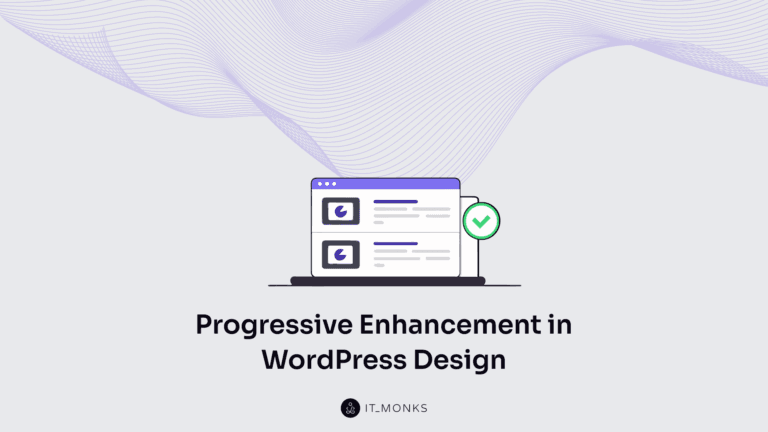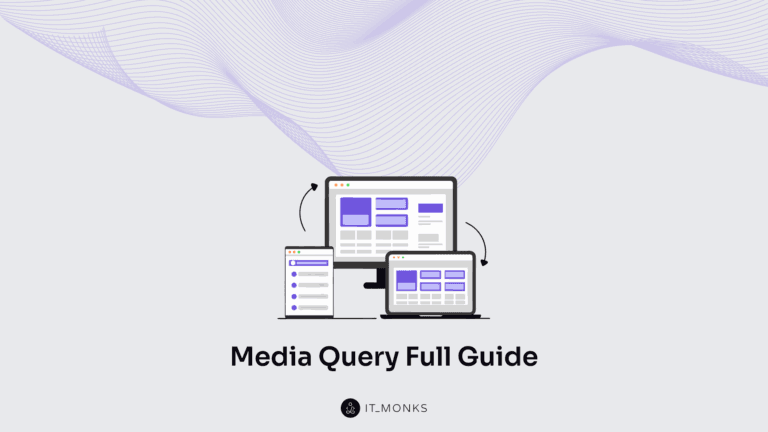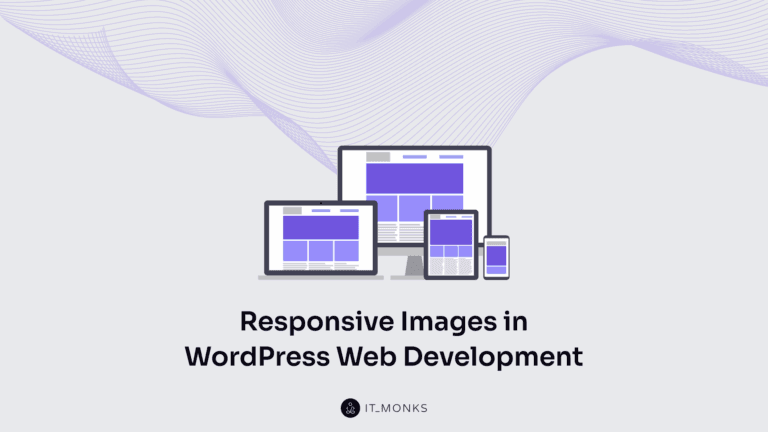Best Programming Language For Ecommerce Website
Table of Contents

The ecommerce industry is gaining momentum, with revenues anticipated to exceed $7.4 trillion by 2025. As more people shift to online shopping, many businesses are launching web stores to reach a broader range of customers. As more businesses prioritize ecommerce, the importance of choosing the right programming language for ecommerce website cannot be overestimated.
The language used for the ecommerce backend defines your website’s functionality, usability, security, etc. What are the best languages for ecommerce web development? What computer language to choose for business? What’s the most complex coding language? This article answers all these questions and provides valuable recommendations for choosing the right language for your site programming. Let’s dive in!
Why Is It Important to Choose the Right Programming Language?
A website’s performance may be affected by different factors. The programming language used for the ecommerce backend is one of them. Site programming language impacts a web store’s loading speed, user experience, security, scalability, and maintainability. Provided that you’ve selected the right e-programming language, you may rest assured that your website runs smoothly, remains threats-free, scales as your business grows, and remains easy to maintain and extend. Thus, selecting the right programming languages for an ecommerce website is a strategic decision that can influence the long-term success of the e-commerce platform.
How to Choose the Right Programing Language
Different factors should be considered when choosing the right ecommerce backend language. We all want our websites to run smoothly without glitches and provide web users with an exceptional shopping experience. In most cases, the selected e-programming language significantly impacts your website’s performance, security, and scalability. How do you make the right choice to ensure your website performs to its fullest potential? Let’s consider the major tips on choosing the right site programming language for your store.
Performance
Your website’s performance is paramount, particularly for ecommerce sites where loading times and overall responsiveness directly affect user experience and sales. Different programming languages can influence performance in various ways.
For instance, languages like C++ and Rust are known for their high performance due to their compiled nature, making them suitable for performance-critical components. On the other hand, Ruby or Python ecommerce languages might be easier to write and maintain but can be slower. Balancing ease of development with your website’s performance needs is essential.
Scalability
As your business grows, your website must handle increasing users and transactions. Scalability refers to your website’s ability to expand and manage this growth efficiently.
Languages like Java and Scala are renowned for their scalability features, enabling smooth growth and handling of increased load. Choosing a language that supports concurrent processing and distributed computing can ensure your website remains performant as it scales.
Security
Security is a critical consideration, especially when dealing with sensitive user data. Different programming languages offer varying levels of built-in security features. For example, languages like Java and C# have robust security frameworks and practices. It’s important to choose a language with a good security track record and follow best practices such as input validation, proper authentication mechanisms, and regular site security audits to protect user data.
Developer Community and Support
A strong developer community and extensive support resources are invaluable when building and maintaining a website. Languages like JavaScript, Python, and PHP have large, active communities, which means abundant libraries, frameworks, and tools are available to speed up development. Furthermore, a supportive community can provide quick help and solutions to your problems, which is crucial for timely and efficient development.
Cost and Time of Development
The typical website design cost varies significantly based on the chosen programming languages for ecommerce websites. Due to their popularity and large talent pools, languages like PHP and JavaScript tend to have lower hiring costs and quicker development times. Conversely, specialized languages might require hiring more expensive or less readily available developers. It’s important to consider the long-term costs, including ongoing maintenance and potential scalability issues, to ensure that your investment in development remains sustainable.
TOP Programming Languages for Ecommerce Backend
Considering the importance of choosing the right ecommerce programming language and following the aforementioned tips on making the right choice, let’s outline the top 5 programming languages for building an ecommerce site and specify the advantages and drawbacks of each.
PHP
PHP is one of the most popular languages for web development due to its simplicity and ease of integration with HTML. It powers many content management systems and e-commerce platforms, including WooCommerce for WordPress.
Popular frameworks like Laravel, Symfony, and WooCommerce make PHP a robust choice for e-commerce.
Pros:
- Wide range of hosting options and support.
- Extensive community and resources.
- Numerous e-commerce plugins and integrations.
- Easy to deploy and integrate with databases.
Cons:
- Security concerns if not properly managed.
- Performance can lag compared to more modern languages.
- Can become complex and hard to manage for large-scale applications.
JavaScript (Node.js)
JavaScript is unique because it can be used for both frontend (via frameworks like React, Angular, or Vue.js) and backend development (via Node.js). This uniformity can simplify development and maintenance.
Express.js, Next.js, and various libraries for handling payments, authentication, and more make JavaScript a versatile choice for e-commerce.
Pros:
- High performance and scalability with asynchronous programming.
- Single language for both client-side and server-side scripting.
- Large community and extensive libraries.
- Real-time data handling capabilities.
Cons:
- Callback hell and complexity in asynchronous programming.
- Can be challenging to manage for very large applications.
- Security vulnerabilities if not properly handled.
Python
Python is known for its readable syntax and ease of learning, making it a favorite among beginners and experienced developers alike.
Django and Flask are popular Python frameworks for building robust e-commerce applications.
Pros:
- Highly readable and maintainable code.
- Extensive standard library and third-party modules.
- Strong community support and resources.
- Effective in handling data analytics and machine learning integration.
Cons:
- Performance can be slower compared to compiled languages.
- Consumes more memory which can be a consideration for large-scale applications.
- Limited options for mobile app development.
Ruby
Ruby is a dynamic, object-oriented language known for its simplicity and productivity, often used with the Rails framework (Ruby on Rails).
Pros:
- Rapid development with Ruby on Rails.
- Clean and readable syntax.
- Strong community and plenty of gems (libraries).
- Convention over configuration approach reduces development time.
Cons:
- Performance may not be as high as in some other languages.
- It can be challenging to scale for very large applications.
- Less popular than some other languages, which may limit the pool of developers.
Java
Java is a highly robust and secure language known for its scalability and suitability for large-scale enterprise applications.
Pros:
- Platform-independent due to the Java Virtual Machine (JVM).
- Strong security features and memory management.
- Excellent performance and scalability.
- An extensive set of libraries and frameworks like Spring.
Cons:
- Verbose syntax compared to other modern languages.
- Requires more memory and resources.
- Slower development process due to its complexity.
Other Languages
C#: This is popular for enterprise applications and integrates well with Microsoft technologies. It has excellent tooling support with Visual Studio and strong performance.
Perl: Known for its text processing capabilities and used in legacy systems. It offers good performance but can be harder to maintain due to its complex syntax.
Go (Golang): Developed by Google, Go is known for its simplicity, performance, and concurrency support, making it ideal for scalable web applications.
Pros:
- C#: Excellent integration with .NET framework, strong IDE support, good performance.
- Perl: Powerful for text manipulation and scripting, mature ecosystem.
- Go: High performance, efficient concurrency, easy deployment.
Cons:
- C#: Mostly tied to the Microsoft ecosystem, which might not be suitable for all projects.
- Perl: There is a steep learning curve and fewer modern language features.
- Go: Fewer libraries and frameworks than more established languages, simpler but less expressive syntax.
Summary
Choosing the right programming language for your ecommerce website should be based on your project’s specific needs and goals. While many options are available, PHP is often recommended due to its cost-effectiveness and robust support, especially with platforms like WooCommerce. This makes PHP particularly suitable for most online stores, providing an affordable and reliable solution. For those looking to develop a scalable and secure e-commerce site, IT Monks agency specializes in PHP development, offering comprehensive services to build and maintain your online store.
Business Characteristics Comparison
| Language | Cost & Time of Development | Community & Support |
|---|---|---|
| PHP | Low | Large |
| JavaScript | Moderate | Large |
| Python | Moderate | Large |
| Ruby | Moderate | Moderate |
| Java | High | Large |
| C# | High | Moderate |
| Perl | High | Small |
| Go | Moderate | Moderate |
When evaluating programming languages for your ecommerce site, it’s essential to consider technical and business aspects. PHP offers a balanced approach with moderate performance, scalability, security, low development costs, and extensive community support. This makes it an attractive option for many businesses, especially when leveraging tools like WooCommerce.
Technical Characteristics Comparison
| Language | Performance | Scalability | Security |
|---|---|---|---|
| PHP | Moderate | Moderate | Moderate |
| JavaScript | High | High | Moderate |
| Python | Moderate | Moderate | High |
| Ruby | Moderate | Moderate | Moderate |
| Java | High | High | High |
| C# | High | High | High |
| Perl | Low | Low | Moderate |
| Go | High | High | High |
Consider partnering with IT Monks agency for expert PHP development services to ensure a seamless and efficient ecommerce site launch.
Contact
Don't like forms?
Shoot us an email at [email protected]

Send a Project Brief
You need to load content from reCAPTCHA to submit the form. Please note that doing so will share data with third-party providers.
More InformationYou are currently viewing a placeholder content from Turnstile. To access the actual content, click the button below. Please note that doing so will share data with third-party providers.
More InformationYou are currently viewing a placeholder content from Facebook. To access the actual content, click the button below. Please note that doing so will share data with third-party providers.
More InformationYou are currently viewing a placeholder content from Instagram. To access the actual content, click the button below. Please note that doing so will share data with third-party providers.
More InformationYou are currently viewing a placeholder content from X. To access the actual content, click the button below. Please note that doing so will share data with third-party providers.
More Information


